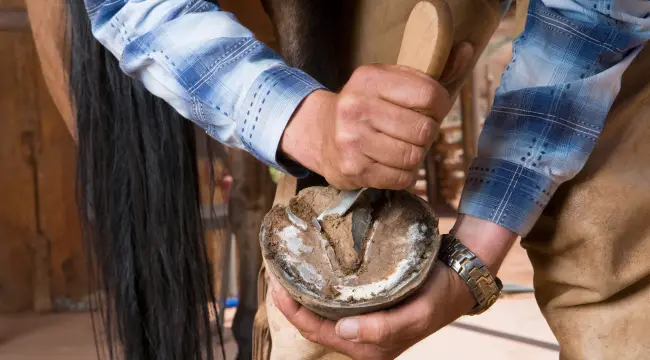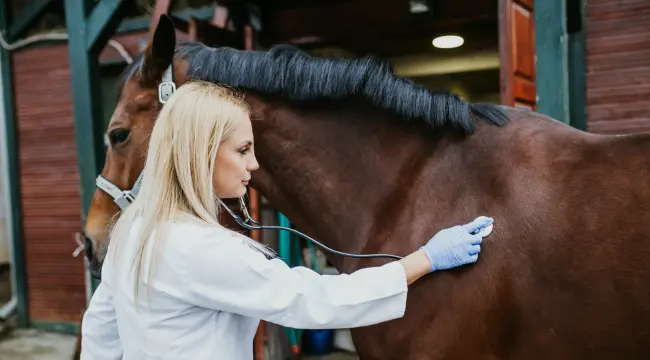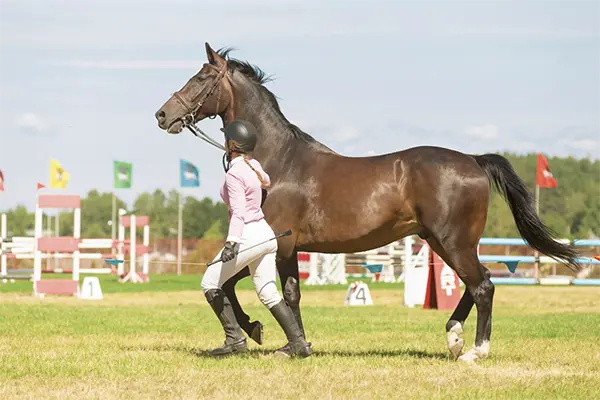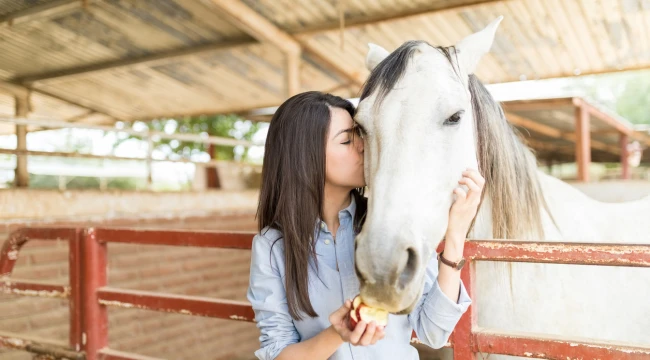How to Take Care of a Horse- Have you ever dreamed of owning a horse? The idea of having a majestic companion by your side is truly exciting. Horses not only offer friendship but also help you stay active through riding or spending time together. They can even bring families closer and teach kids about responsibility. However, owning a horse is a big commitment. Your horse relies on you for love and care, and they can live for more than 35 years if well looked after. In this article, we’ll explore 16 important tips for anyone thinking about becoming a horse owner and learning how to take care of a horse. It’s a journey filled with joy, but it also comes with responsibilities you need to know about.
1. Type of Horse
Horses come in various breeds, each suited for specific activities and tasks. It’s a good idea to learn about the different types of horse breeds and their characteristics. When looking for a riding horse, remember that a healthy horse can comfortably carry about 20% of its weight, which includes the rider and the tack they wear. Size matters, so consider this factor when making your choice. The horse’s previous training and its current abilities play a significant role in determining its price. Safety and experience are paramount, particularly for first-time buyers. Prioritize a horse’s track record and reliability to ensure a positive and secure partnership.
2. Where to Keep Your Horse-How to Take Care of a Horse?
When it comes to housing your horse, you have two primary options: maintaining them at your own property or opting for an external boarding facility. Ensuring your horse’s well-being requires certain essentials for proper horse care. These include a dedicated space cleared of debris for exercise, a sheltered area to protect against the elements, access to consistently clean and fresh water, and a diet of high-quality grass or hay. Even if you possess enough land to accommodate your horse, it’s crucial to recognize the considerable effort needed to maintain a clean environment and meet your horse’s nutritional needs. Boarding facilities come in varying price ranges, influenced by factors such as location and geographic region. The extent of care provided by the facility also plays a role in determining costs. Comprehensive services encompass daily feeding and stall maintenance, albeit at a higher expense compared to facilities where owners undertake these responsibilities themselves.
3. Maintaining a Clean Living Space: Ensuring Your Horse’s Comfort
Keeping your horse’s living environment clean is vital for their well-being. If your horse spends time in a stall, regular cleaning is essential – aim for at least once a day, and preferably twice, to remove any manure or wet spots from urine. While horses can doze while standing, they require a comfortable spot to lie down for deep sleep. Bedding materials like straw or shavings are excellent choices as they absorb urine and provide a cozy resting area. It’s important to note that bedding materials such as corn cobs and black walnut shavings should be avoided, as they can pose dangers to your horse’s health.
For horses with limited access to turnout areas like drylots or pastures, keeping them engaged is crucial to prevent boredom. Turnout and social interaction contribute to a horse’s happiness, but introducing new herd members requires a careful and gradual process. Slow integration helps prevent injuries that may occur as horses establish their pecking order within the group. By prioritizing cleanliness, comfort, and social well-being, you can ensure a content and healthy life for your equine companion.
4. A Balanced Diet for Optimal Health
While pastures contribute to a horse’s diet, they often fall short of providing year-round sustenance, making high-quality hay an essential supplement. Prior to grazing, pastures should undergo thorough evaluation to ensure they are devoid of toxic plants. Additionally, it’s crucial to monitor horses for weight gain, as some may be susceptible to ailments like founder when exposed to lush pastures. Collaborating with your veterinarian to establish an appropriate diet is imperative.
Understanding the early signs of laminitis and taking simple, preventative steps can make a big difference when turnout on rich grass is unavoidable. Practical measures are well explained on Hippo Health, which focuses on causes, symptoms and natural management strategies. Owners should also routinely check hooves for warmth or increased digital pulse and adjust feed accordingly. Adding these routines into daily care reduces flare-up risk without major disruption to horse management.
5. Optimal Horse Feeding Practices: A Practical Approach
Figuring out how to feed your horse is crucial for keeping them healthy and full of energy. Instead of a single large grain meal, it’s advisable to provide multiple smaller servings, aligning with their natural eating habits and supporting enhanced digestion and nutrient utilization. While a majority of horses receive grain twice daily for ease of care, incorporating an extra lunchtime feeding is beneficial when larger grain portions are necessary. This feeding strategy promotes effective food digestion and utilization, preventing potential issues that can arise from overfeeding at once.
- Individualized Nutrition: Recognize that each horse possesses unique dietary requirements. When determining their intake, take into account their size and activity level. This holistic approach ensures that their nutritional needs are met accurately.
- Hay and Pasture Balance: Evaluate the quantity of hay or pasture accessible to your horse. Those with ample pasture grazing might require minimal hay or none at all, while horses with limited turnout or subpar grazing conditions need additional hay, whether stabled or outdoors.
- Seasonal Considerations: During winter or drought periods, supplement pasture with hay to maintain consistent nutrition. Conversely, in times of abundant and lush grass growth, adjustments can be made to hay rations, depending on the availability of pasture.
- Mindful Grain Feeding: Start with a conservative amount of grain and gradually adjust as needed. This measured approach ensures an optimal balance among pasture, hay, and grain to cater to your horse’s specific nutritional demands.
- Adjusting for Workload Changes: As your horse’s activity level varies, their food ration should adapt accordingly. Whether they’re engaging in heavier work or enjoying lighter activity, appropriate dietary adjustments play a crucial role in sustaining their overall well-being.
By adopting these informed feeding practices, you can cultivate a diet that supports your horse’s individual requirements and contributes to their lasting health and happiness.
6. Gradual Changes to Feed and Feeding Schedules
When altering your horse’s feed or adjusting their meal size, it’s vital to do so gradually. Abrupt shifts in feed type or quantity can trigger colic or founder, potentially jeopardizing your horse’s well-being. If you’re altering the amount of feed, consider making small increments over several weeks. For changing the feed type, a recommended method involves a gradual transition over six days: replace 25% of the current feed with the new one every two days until your horse is entirely consuming the new feed. This careful approach ensures your horse’s digestive system adjusts smoothly, minimizing the risk of health issues.
7. Don’t Feed Immediately Before Or After Exercise
To ensure your horse’s comfort and health, it’s advisable to avoid feeding them right before or after exercise. Ideally, allow an interval of about an hour after a meal before riding your horse. For more demanding activities, like intensive workouts, a waiting period of approximately three hours is recommended. Allowing sufficient time between feeding and exercise is crucial, as a full stomach can limit lung capacity and make physical exertion more challenging for your horse. During intense efforts, blood flow is redirected from the digestive organs, potentially causing a slowdown in gut movement and increasing the risk of colic. If you plan to feed your horse after a workout, ensure they have completely cooled down – their breathing should have returned to a normal rate, and their skin should not feel excessively warm or sweaty. By observing these guidelines, you can contribute to your horse’s overall well-being and minimize potential health risks during exercise.
8. Consistent Feeding Times for Happy Horses
Horses are masters of routine, often outshining their human caregivers in punctuality. Harnessing their remarkable internal clocks, horses thrive on predictability, particularly when it comes to their feeding schedule. Establishing a steady routine where meals are delivered at the same time daily is essential. While many horses can adapt to sudden changes without harm, it’s crucial to exercise caution, especially for those prone to colic. A sudden disruption in their routine might extend beyond mere annoyance and potentially trigger a colic episode. By adhering to a regular feeding schedule, you provide your horse with a comforting sense of order that contributes to their well-being and contentment.
9. Grooming

Regular grooming and tending to your horse’s hooves are essential components of daily healthcare, often referred to as husbandry. Beyond maintaining their physical well-being, these routines also foster a strong bond between you and your horse. Equipped with specialized tools, you can ensure the upkeep of a healthy haircoat. Additionally, clearing out the recesses and corners of the hooves, commonly known as “picking out the feet,” is a crucial practice to preserve your horse’s soundness. These attentive tasks contribute not only to your horse’s appearance but also play a pivotal role in their overall health and well-being.
10. Horses Need Hoof Maintenance And Veterinary Care

A horse’s well-being hinges on a blend of regular maintenance and periodic medical attention. To maintain their mobility and comfort, it’s crucial to arrange for a farrier (or blacksmith) every six to eight weeks, ensuring routine hoof trimming and potential shoeing. This upkeep parallels the way we tend to our own nails, emphasizing the importance of regular care for your horse’s hooves. Depending on factors like conformation and activities, your farrier’s expertise will determine whether horseshoes are necessary.
Beyond hoof care, prioritizing your horse’s overall health remains paramount. Annual vaccinations, including protection against tetanus and other diseases, play a crucial role in safeguarding their well-being. Additionally, routine dental care administered by a veterinarian supports proper dental hygiene and contributes to your horse’s optimal health.
While proactive measures aim to avert health issues, it’s prudent to acknowledge the potential of medical emergencies. Unfortunately, these unforeseen events can result in substantial expenses, sometimes reaching several thousand dollars. By remaining attentive to your horse’s requirements and ensuring timely care, you lay the groundwork for a healthy and enriching life.
11. Dental Care
Horses have a unique way of eating, involving the grinding of grass, hay, or grain. This natural process has led to the development of teeth that continuously grow and change shape throughout their lives. However, this growth can lead to uneven wear, resulting in painful hooks and points, especially on their molars. Such dental issues can impact their eating ability and, in some cases, even shorten their lifespan. To ensure your horse’s lasting health, it’s crucial to pay attention to their dental needs.
Annual dental check-ups by a veterinarian are highly recommended. During these evaluations, any problematic points are skillfully smoothed down through a procedure called “floating.” By addressing potential dental problems in a timely manner, you help maintain your horse’s overall well-being and contribute to a longer, healthier life.
12. Safeguarding Your Horse’s Health

Having access to a veterinarian is paramount for your horse’s overall well-being. Their expertise is essential for various aspects of care, including vital vaccinations and effective parasite control through deworming. By following these practices, you can significantly extend your horse’s lifespan and reduce the risk of diseases.
Beyond routine care, a veterinarian plays a pivotal role in emergency situations. Whether your horse faces lameness, injuries, or illnesses requiring immediate attention – like lacerations or colic – a veterinarian’s expertise is indispensable.
Additionally, it’s crucial to have a contingency plan in place. This is especially important for scenarios such as emergencies like wildfires or the need for hospitalization. Adequate transportation arrangements ensure your horse’s swift and safe transfer when time is of the essence.
With a reliable veterinarian at your disposal and proactive planning, you provide your horse with the best possible care, ensuring their health and security in any situation.
13. Tack Essentials: Enhancing Your Horse’s Performance
Tack refers to the assortment of equipment that directly influences your horse’s performance in their respective discipline. This encompasses items such as the bridle and saddle for riding, as well as the harness for carriage driving. Saddles, in particular, vary according to disciplines, and achieving the right fit is paramount to ensure both your comfort and your horse’s.
Sustaining your tack’s quality demands consistent care. After each riding session, it’s essential to clean your equipment thoroughly. Regular conditioning and periodic inspections for any signs of damage are also vital steps in maintaining the longevity and safety of your tack. By upholding these practices, you create an environment where both you and your horse can perform optimally and comfortably.
14. Embarking on the Riding Journey: Lessons and Training
After dedicating ample energy to your horse’s care, you’ll likely be eager to engage in riding. Exploring riding lessons or training sessions can offer valuable guidance. Many boarding facilities offer on-site trainers, or you have the option to hire a trainer who can visit your horse. Horse riding is a bona fide sport, and receiving feedback on both your riding technique and your horse’s performance holds significance, regardless of your skill level.
Undoubtedly, the decision to bring a horse into your life should be approached thoughtfully. While horse ownership demands commitment, the rewards are immeasurable. It can prove to be one of the most fulfilling choices for you and your family, fostering lasting memories and forging a deep bond with your equine companion.
15. Parasite Control
Given their constant exposure to intestinal worms from the grazing grounds, horses require a structured anti-parasite regimen as directed by your equine practitioner. The risk of harboring a substantial worm load looms large, potentially leading to severe illness or even fatal consequences for your horse. Timely and consistent treatment is indispensable to safeguard your horse’s well-being, making parasite control a fundamental aspect of responsible horse care.
16. Horses Need Exercise

Complementing the exercise your horse receives during rides, it’s essential to provide them with a designated paddock or pasture area for relaxation and leisurely strolls. Ensuring your horse’s well-being entails avoiding prolonged confinement in a stall, except under a veterinarian’s guidance. An ample pasture, enclosed by robust and secure fencing, offers the ideal space for your horse to move freely and stay safe. Notably, barbed wire should be avoided as a fencing material, as it poses a significant risk of causing severe injuries. By promoting regular exercise and a safe environment, you contribute to your horse’s overall health and happiness.
Conclusion
In conclusion, understanding how to take care of a horse is a fundamental responsibility for any equine owner. From proper feeding and grooming to regular health check-ups, the well-being of your horse depends on your commitment to providing the best care possible. By following expert guidance and implementing essential care techniques, you can forge a strong bond with your equine companion while ensuring their health, happiness, and longevity.

